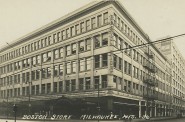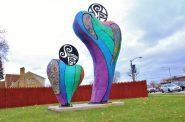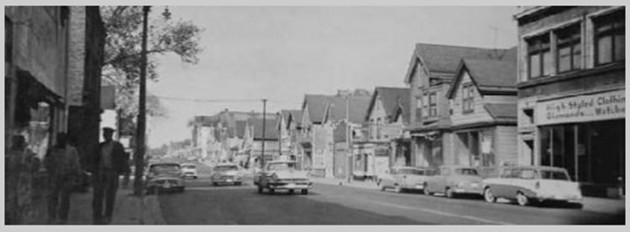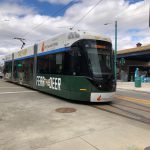Lakefront, Late 1920s
Before the War Memorial -- and before trees and vegetation -- the lakefront was a flat plain.
At the end of the 1880s the Chicago & Northwestern would greatly expand its Milwaukee operations adding a magnificent new depot and many more tracks. The tracks are clearly visible in this 1920s postcard as is steam from a locomotive, rising in the distance from a barely perceptible train. This shot was likely taken from the depot’s tower. The landscaping of Juneau Park, at this point, had changed little from the 1880s. But other big changes dominate the photo.
This was the era of mayor Daniel Hoan, the “sewer Socialist” who served from 1916-1940, and who would make updating infrastructure a top priority. Access to Lake Michigan also was a priority and the lakeside railroad tracks would be bypassed by a bridge overpass leading to many acres of new parks, courtesy of a major landfill project. The bridge is the Lincoln Memorial Bridge which was completed in 1926. The Juneau Park lagoon is clearly visible, minus any trees.
Much has changed since then. The depot and railroad tracks are gone and much more landfill has been added since then. The bridge has also been replaced. In 1957 the plaza at the upper right would become the entrance to the art museum and war memorial designed by Eero Saarinen. Today the railroad tracks are bike paths and a southern extension of Lincoln Memorial Drive. Quite a dramatic change from the early days of sand cliffs along a beach.
Jeff Beutner is a collector of photographs, postcards and stereoviews of old Milwaukee. This column features these images, with historical commentary by Beutner.
Yesterday's Milwaukee
-
When Boston Store Was Big
 Apr 18th, 2018 by Jeff Beutner
Apr 18th, 2018 by Jeff Beutner
-
Sherman Park Has Been a Melting Pot
 Aug 25th, 2017 by Jill Florence Lackey, PhD
Aug 25th, 2017 by Jill Florence Lackey, PhD
-
The Rise and Fall of Bronzeville
 Aug 5th, 2017 by Jill Florence Lackey, PhD
Aug 5th, 2017 by Jill Florence Lackey, PhD






















The competition and submission for plans that created the lagoon and the drive were published in the newspapers in 1896 (at least they were in the local German language press), just as plans and proposals are posted on this site. The occasion was for the Wisconsin Exposition in 1898. Some of the designs were pretty wild, including a huge and elaborate amphitheater carved into the hillside where LaFayette Hill is.
Another interesting feature of one of the plans was the inclusion an “electric car” line (separate from the industrial tracks) that would’ve run up the lakefront. Even an enclosed 1/3 mile bicycle track that would’ve been located east of the pumping station, where the restaurant and parking lot is now – bicycling was hot in the 1890s.
The photographer must have been on the roof of the Elks Club building at Mason and Prospect, which was replaced by the big ugly building recently razed by NML to build an even bigger and uglier building. The C&NW Depot was one block south at Wisconsin and Prospect.
Hi, I’m a relatively new Milwaukeean, and I’m very interested in how the Lakefront, as we know it today, came about as a landfill from the Deep Tunnel Project. The lakefront of this city is by far my favorite aspect of Milwaukee. I would love it if you could enlighten me.
Thank you,
BarbFranczyk
barbfranczyk2@gmail.com